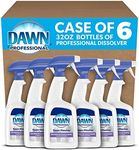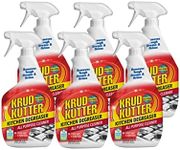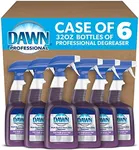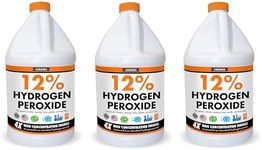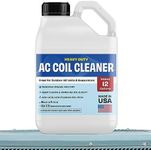Buying Guide for the Best Kitchen Degreasers
Choosing the right kitchen degreaser can make a significant difference in maintaining a clean and hygienic kitchen. A good degreaser will effectively remove grease, grime, and food residues from various surfaces, making your cleaning tasks easier and more efficient. When selecting a kitchen degreaser, it's important to consider several key specifications to ensure you pick the best product for your needs.Cleaning PowerCleaning power refers to the effectiveness of the degreaser in breaking down and removing grease and grime. This is important because a stronger cleaning power means less effort and time spent scrubbing. Cleaning power can range from light-duty for everyday cleaning to heavy-duty for tackling tough, baked-on grease. If you frequently cook with oils and fats, a heavy-duty degreaser might be more suitable, whereas a light-duty option could suffice for occasional use.
Surface CompatibilitySurface compatibility indicates which surfaces the degreaser can be safely used on without causing damage. This is crucial because using the wrong product on certain surfaces can lead to discoloration, corrosion, or other damage. Common surfaces include stainless steel, glass, ceramic, and countertops. Check the product label to ensure it is safe for the surfaces in your kitchen. If you have a variety of surfaces, look for a versatile degreaser that works on multiple materials.
IngredientsThe ingredients in a degreaser determine its safety and environmental impact. Some degreasers contain harsh chemicals that can be harmful to your health and the environment, while others use natural or biodegradable ingredients. If you have sensitivities or prefer eco-friendly products, look for degreasers labeled as non-toxic, biodegradable, or free from harsh chemicals. Reading the ingredient list can help you make an informed choice based on your preferences and values.
Ease of UseEase of use refers to how simple and convenient the degreaser is to apply and clean up. This includes factors like the application method (spray, wipe, or concentrate), the need for dilution, and the rinsing process. A product that is easy to use can save you time and effort. If you prefer a quick and straightforward cleaning routine, look for ready-to-use sprays or wipes. For more flexibility and cost-effectiveness, concentrates that can be diluted might be a better option.
ScentThe scent of a degreaser can affect your overall cleaning experience. Some products have strong chemical odors, while others are scented with pleasant fragrances or are unscented. If you are sensitive to smells or prefer a fresh-smelling kitchen, consider choosing a degreaser with a mild or pleasant scent. Unscented options are also available for those who prefer no added fragrances.
ResidueResidue refers to any leftover film or streaks that a degreaser might leave behind after cleaning. This is important because a product that leaves residue can make surfaces look dull or require additional cleaning. Look for degreasers that are advertised as streak-free or residue-free to ensure a clean and shiny finish. If you want to minimize extra work, choose a product that promises no residue.
